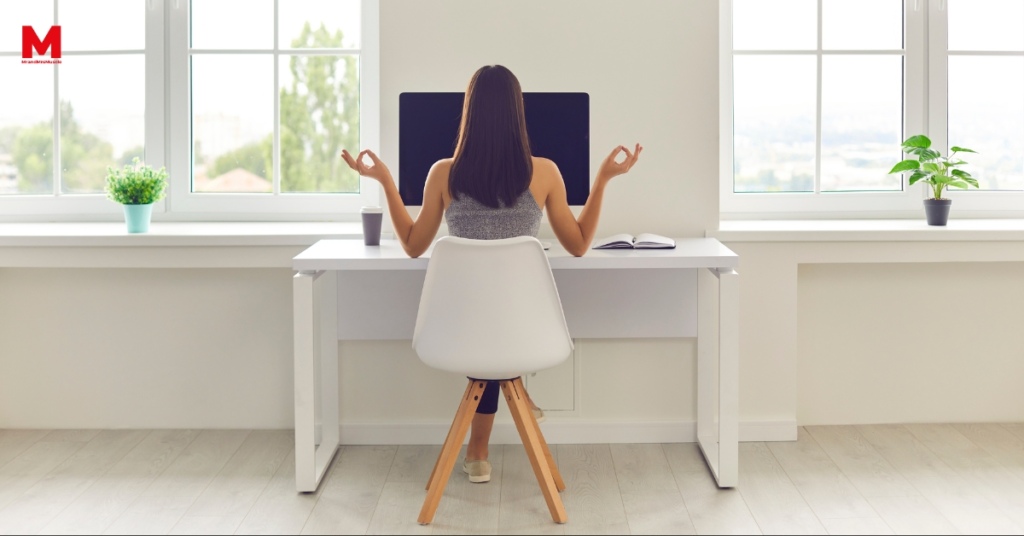We all know how stressful life can be. Whether it’s the pressures of work, family, or other commitments, it can take a toll on our mental and physical health. Fortunately, there are plenty of ways to reduce stress and anxiety levels. One of the most effective approaches is mindfulness – a practice that helps us become more aware of our thoughts, feelings, and environment. In this blog post, we’ll look at 5 mindfulness techniques that can help you relax, restore balance, and reduce stress and anxiety. Read on to learn more about how these techniques can benefit you and how to get started.
The Benefits of Mindfulness for Stress and Anxiety
Mindfulness has become increasingly popular as a technique to help reduce stress and anxiety. By being present in the moment and aware of our thoughts and feelings, we can cultivate a greater sense of calm and inner peace.
Here are some of the benefits of practicing mindfulness:
– Reduces stress levels:
When we practice mindfulness, we are able to calm the mind and reduce the impact of stress on our bodies and minds.
– Improves mental health:
Mindfulness has been found to be an effective technique for managing anxiety, depression, and other mental health conditions.
– Enhances emotional wellbeing:
By cultivating a greater sense of self-awareness, we can better understand and manage our emotions, leading to improved emotional wellbeing.
– Increases focus and attention:
Practicing mindfulness can help us to focus our attention on the present moment, increasing our ability to concentrate and be productive.
– Enhances relationships:
When we are more present and attentive, we can deepen our connections with others and cultivate more meaningful relationships.
By incorporating mindfulness techniques into our daily routine, we can experience these benefits and reduce our stress and anxiety levels.
Technique 1: Mindful Breathing
One of the most basic and effective mindfulness techniques to reduce stress and anxiety is mindful breathing. By paying attention to the sensations of your breath, you can anchor yourself in the present moment and calm your mind.
Here’s how to practice mindful breathing:
1. Find a quiet place where you can sit comfortably without distractions.
2. Close your eyes and take a few deep breaths, inhaling through your nose and exhaling through your mouth.
3. Focus your attention on your breath, noticing the sensation of the air moving in and out of your nostrils or the rise and fall of your chest and belly.
4. Whenever your mind wanders, gently bring your attention back to your breath.
5. Practice for at least 5-10 minutes daily, gradually increasing the duration as you feel more comfortable.
Mindful breathing can be practiced anywhere, anytime, whenever you need to take a break and calm down. It’s a simple yet powerful tool that can help you manage stress and anxiety and enhance your overall wellbeing.
Technique 2: Intention Setting
Setting intentions can be a powerful mindfulness technique to reduce stress and anxiety. By focusing on what you want to accomplish or how you want to feel, you can align your actions with your values and goals.
Here’s how to practice intention setting:
1. Find a quiet place where you won’t be disturbed for a few minutes.
2. Take a few deep breaths and let go of any tension or stress.
3. Ask yourself what your intention is for the day or for a particular situation.
4. Phrase your intention positively, such as “I intend to approach this with patience and kindness.”
5. Repeat your intention to yourself a few times, allowing yourself to really feel it.
6. Visualize yourself carrying out your intention and achieving your desired outcome.
By setting intentions, you can increase your sense of purpose and focus on what’s important to you. This can help reduce stress and anxiety by providing a sense of clarity and direction. Give it a try and see how it feels!
Technique 3: Body Scan Meditation
Another effective mindfulness technique to reduce stress and anxiety is the Body Scan Meditation. This technique involves paying close attention to different parts of your body, gradually moving your focus from one part to the other, and observing any physical sensations or feelings that arise. By doing so, you can increase your body awareness, reduce muscle tension, and relax your mind.
Here are the steps to practice the Body Scan Meditation:
1. Find a quiet and comfortable place where you can lie down or sit comfortably.
2. Close your eyes and take a few deep breaths to relax your body and mind.
3. Start at the top of your head and slowly scan your body, moving downwards towards your feet, and observe any physical sensations you notice along the way.
4. If you notice any tension or discomfort in any part of your body, focus on that area and breathe into it, allowing the tension to release.
5. Spend at least 10 minutes practicing the Body Scan Meditation, and try to do it daily for the best results.
By incorporating Body Scan Meditation into your daily routine, you can improve your overall well-being and reduce stress and anxiety levels.
Technique 4: Gratitude List
Gratitude is a powerful practice that can shift our focus from what is going wrong in our lives to what is going right. By cultivating an attitude of gratitude, we can reduce stress and anxiety and increase our overall well-being. One simple way to incorporate gratitude into our daily routine is by creating a gratitude list.
Here’s how you can get started:
Make a List of Things You Are Grateful For
– Find a quiet and comfortable space where you can reflect and write.
– Start by focusing on the present moment and bring to mind things that you are grateful for. They can be big or small, tangible or intangible.
– Write down at least five things that you are grateful for. You can expand on each item and write about why you are grateful for it.
– Be specific and try to capture the feelings of gratitude as you write.
– Aim to make this a daily practice. Set aside a few minutes each day to reflect on and write down new things that you are grateful for.
Practicing gratitude has been shown to have numerous benefits for our mental and physical well-being. Research has found that expressing gratitude can lead to lower levels of stress and anxiety, improved sleep quality, increased happiness, and enhanced relationships. Gratitude helps shift our focus from negative thoughts and emotions to positive ones, fostering a sense of contentment and peace.
By creating a gratitude list, we train our minds to notice and appreciate the good things in life, even amid challenges. It serves as a reminder of all the blessings we have and helps us develop a more positive and optimistic outlook. So, start making your gratitude list today and experience the transformative power of gratitude in relieving stress and anxiety.
Technique 5: Morning Journal
One powerful mindfulness technique that can help reduce stress and anxiety is morning journaling. Taking the time to reflect on your thoughts and emotions first thing in the morning can set a positive tone for the rest of the day.
Here’s how to incorporate morning journaling into your mindfulness practice:
– Set aside 10-15 minutes each morning to sit down with your journal.
– Begin by writing down any thoughts or emotions that are present for you in that moment. This can help you acknowledge and release any lingering stress or anxiety from the previous day.
– Next, write down three things you are grateful for. This simple act of gratitude can shift your focus to the positive aspects of your life and cultivate a sense of contentment.
– Take a moment to set an intention for the day ahead. What would you like to accomplish or how would you like to feel? Write this down as a reminder to stay mindful throughout the day.
– Finally, end your morning journaling session with a positive affirmation or mantra. This can be a phrase or sentence that resonates with you and helps to cultivate a sense of calm and self-compassion.
Morning journaling is a powerful tool for reducing stress and anxiety because it allows you to release negative thoughts and emotions, focus on gratitude, and set a positive intention for the day ahead. By starting your day with mindfulness and self-reflection, you can cultivate a sense of inner peace and resilience that will carry you through any challenges that may arise. Give morning journaling a try and see the transformative effects it can have on your mental well-being.
Summary
Incorporating mindfulness techniques into your daily routine can be a game-changer when it comes to reducing stress and anxiety. From practicing mindful breathing to setting intentions and expressing gratitude, these techniques have the power to bring about a sense of calm and peace in your life. By dedicating just a few minutes each day to these practices, you can experience a profound shift in your overall well-being. So why not give them a try? Start implementing these mindfulness techniques today and embark on a journey towards a more stress-free and anxiety-free life. You deserve it!


